
|
Vol 75 |
Page 19 |
Privacy Policy | Editorial Policy | Profit Policy | Join the Association | List of Members | Contact us | Index | Links
Back Go to page: 1 2 3 4 5 6 7 8 9 10 11 12 13 14 15 16 17 18 19 20 Forward
While the Association does not necessarily agree or disagree with everything on this page,
we do respect the right of everyone to have their say.
Your say!
Contents:
Did the Covid vaccine kill 45,000 people?
Different Russian/USA recruitment practices.
Opinion! Covid-19 virus detractors.
Why you shouldn't pick and chose your vaccine.
War-Gaming Tomorrow:
“It’s possible this will end in an all-out invasion”
Jim Molan
Saturday. 11 September 2021

The biggest strategic challenge for Australia is not the Biden administration’s post-Afghanistan intent and competence – it is the state of the US military and the regional threat. Intent can change overnight. Military capability takes years to waste and years to rebuild.
Not much in the short to medium term can be done to balance up the Chinese advantage in military strength in China’s littoral. Regardless of whether a US administration intends to come to the aid of its allies or help Taiwan, Japan or South Korea, the US now may not have sufficient military strength to be confident of winning. What would it matter how strong China was if the US and its allies were still able to deter China’s aggression or defeat China if deterrence fails? There is now serious doubt among US leadership that the US can do either.
China has one strategic aim: to be dominant, first in the region and then perhaps in the world. A high degree of consensus exists on this even on Capitol Hill. Being dominant is critical to the Chinese Communist Party. This is a zero-sum game. China must reduce US power to increase its own. To achieve this, China has built a world-standard military and, in areas in which China choses to fight, it dominates the US in numbers, technology, range of weapons and short, medium and long-range accurate rocketry capable of reaching close US bases. Some call this the Taiwan scenario without understanding specifics, but Australians must understand that the US and its allies might not win. US power is not infinite.
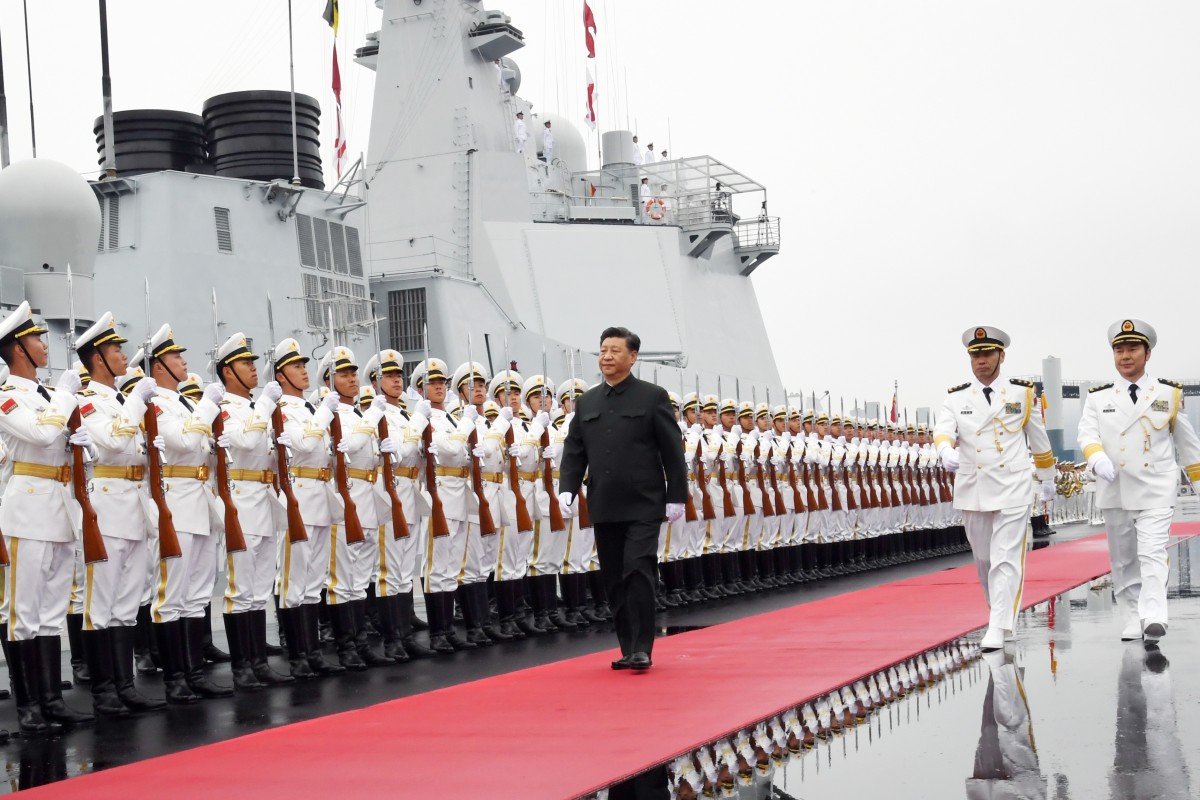
Recognise the Threat.
Australia is a nation that lacks self-reliance and resilience because it depended for so long on the US for security and prosperity and has overindulged in globalisation, as the pandemic reminds us. These circumstances have led us to develop a very good:
small but fragile one-shot military,
-
lacking lethality (cannot fight nasty enough),
-
sustainability (it cannot fight for long enough),
-
mass (it is not big enough).
Ironically, our defence force is the best it has been for the kind of wars of choice it has fought for 75 years while being severely deficient for the future. Australia is large enough and rich enough to defend itself in these frightening times; we just choose not to. The first step is to recognise the nature and magnitude of the threat.
The Coalition has done more for national security and defence than any previous government. Ministers work hard to solve legacy issues for a force designed for a different purpose. Ten years is a long time in the Indo-Pacific for the $270 billion remediation plan to work:
-
Our missile production project is across 20 years,
-
The submarines and new frigates are even longer, and
-
After 10 years, the Australian Defence Force still may be able to last only for days in a modern war dominated by China, even side-by-side with US forces.
In 10 years the ADF may be marginally more lethal, marginally more sustainable, but no bigger, and defence will be backed by a deeply vulnerable nation lacking resilience and self-reliance. This is an existential failure for Australia.
The US only just remains the most powerful nation in the world. Such power loses much if you are forced to fight in your enemy’s backyard and your enemy has allies. As military analysts Toshi Yoshihara and Jame R Holmes point out in their book Red Star Over the Pacific:
“An Asian power fighting close to home can fling most or all of its forces into battle. A faraway global power may have no such luxury.”
To assess Australia’s defence adequacy, it is necessary to state clearly the nature of the threat, to judge what Australia can do and what remediation is required. Generalities are of no value. We know about:
-
pandemics,
-
global financial crises and
-
economic management.
What we know nothing about is fighting modern wars with allies against regional superpowers such as China.
The government role becomes crucial, and it is only prudent to prepare for all contingencies so risk and priorities are understood. Even highly informed Australians think we must have somehow reached military perfection given the money we have spent. But the questions must still be asked:
· Will China come for Australia with hundreds of ships and millions of soldiers?
· Can the US help us?
· Can we do anything to improve our position?
The US is The Target.
I do not believe massive Chinese forces will invade Australia in the first instance, outside of a wider war. We are not the main target, just the handy kicking boy now. The US is the target. The CCP objective is to reduce US power, and Taiwan should be seen as the means. Taiwan is a very nice-to-have for the nationalistic CCP, but any diversion from a focus on US power would be a strategic error on China’s part. How long Taiwan could hold out against China becomes less important. Taiwan may be used by China to entice US naval forces to enter an area of great vulnerability. China’s aim then would be to cause the US such heavy casualties that it has to withdraw from the western Pacific. Alternatively, China may so deter the US that it does not even come to the aid of Taiwan with military force in the first instance. Defeat or reluctance to engage by the US are most serious concerns for Australia.
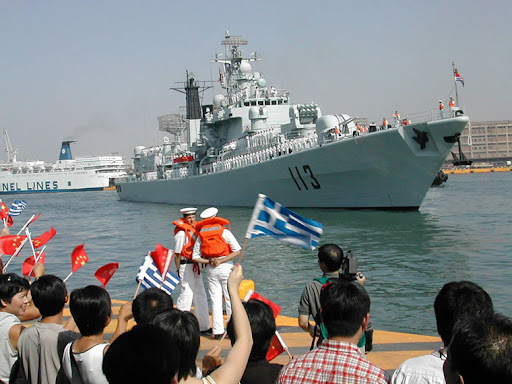
I have long said that conflict over Taiwan could occur within three to five years. Despite the Biden administration’s tough talk, there is no indication that an increase in US military power is to occur in the next few years. The outgoing commander of the US Indo-Pacific Command, Admiral Philip Davidson, told congress in March he thought war might occur over Taiwan within 10 years but more likely in six years. He advocated hardening and defending the US base in Guam, assuming Guam would be a target of China’s rockets and missiles. If Guam is, so are Japan and Korean bases.
Project 2049 Institute defence expert Ian Easton said in October last year: “I am increasingly concerned that a major crisis is coming. It is possible to envision this ending in an all-out invasion attempt and superpower war. The next five to 10 years are going to be dangerous ones. This flashpoint is fundamentally unstable.”
The equation for US involvement in a Taiwan scenario has become very complex. Failing to intervene could hurt US prestige on a scale like Britain’s failed bid to regain control of the Suez Canal in 1956. Ray Dalio, of hedge fund Bridgewater Associates, considers that crisis accelerated the disintegration of the British Empire and signalled the pound’s decline as a reserve currency in favour of the dollar. In September last year Ray Dalio wrote: “The more of a show the US makes of defending Taiwan the greater the humiliation of a lost war. That is concerning because the United States has been making quite a show of defending Taiwan while destiny appears to be bringing that closer to a reality.”
Australians should be deeply concerned as to what China might do once it has forced the US to withdraw from the western Pacific by force or deterrence. The entire region might go pro-CCP by recognising the reality of CCP power. This is the existential threat to Australia and the freedoms that we know. Australians must never forget how the 14 conditions delivered to Australia by China would change this nation forever.
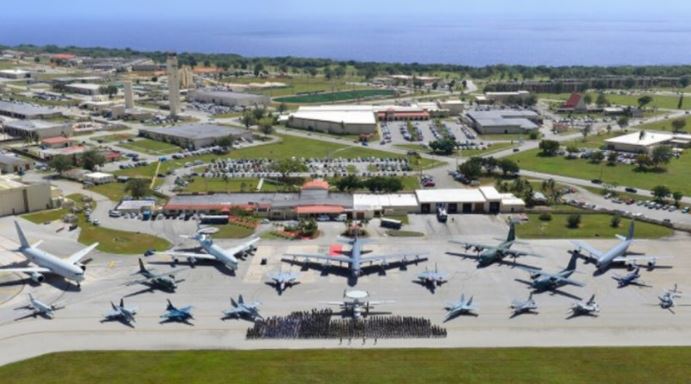
Geography still plays a very important part in war. Military forces still need bases from which to prepare, mount attacks, hide and protect resources. The higher the level of technology, the more important the bases. The location of Taiwan makes it vulnerable to air and sea attack and makes its defence resources vulnerable. That is not to say that Taiwan will be a pushover for the People’s Liberation Army, but Taiwan ultimately will succumb to the PLA if China can organise its forces, hold off US and allied moves to interfere and then, when ready, apply adequate military force.
Sudden Attack Option.
But why would China deploy its forces in an eye-pleasing manner around Taiwan and in its close mainland bases, then start its fight with Taiwan without first reducing US forces that are the main threat to China? The reduction of US power in the western Pacific is China’s main aim, and once that is achieved, Taiwan is China’s. A Taiwan-first approach plays stupidly to US strength, and we cannot count on China being stupid. Taiwan is a nice-to-have for nationalistic CCP reasons, but it is not more important than forcing the US out of the western Pacific. The CCP would see this clearly. Many empires that no longer exist assumed their enemies were stupid.
The US way of war is to station trip-wire forces in countries that may need US help from an aggressive neighbour, and if aggression occurs the US immediately deploys other ready forces to help, but then takes a much longer period to marshal overwhelming force to win. We have seen this in world wars, the Cold War, in Korea, Poland and the Baltic States, as well as in two Gulf wars. This will not work against China in a modern war in the China seas. To understand the limits of US power, take just one day in June this year. Of the 11 carrier strike groups, on that day three were deployed, one each in the Pacific, Atlantic and the Gulf. Of the nine amphibious ready groups, four were deployed, two in the Pacific, one each in the Atlantic and the Gulf. The other carrier and amphibious groups were in various states of readiness and maintenance in Japan or on the east and west coast of the US.
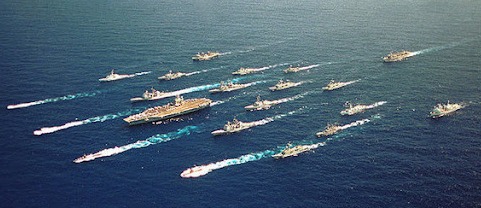
Word has leaked from US classified war games involving the Taiwan scenario that US operational concepts are not providing any confidence to US commanders that the US can prevail. In crude terms, on each occasion the US “has been handed its arse”. The US is working on revising its plans because of those war games, but the problems may be far more complex and frightening than that. Confronted with its own weakness, is this the time the US considers the use of tactical nuclear weapons?
The relevance of this situation is dark enough for the US, but it is even darker for Australia with its paucity of force in its one-shot military, enormous vulnerabilities within the nation, and weakness in its once great and powerful ally. If a major power such as China intends to go to war to achieve its aim of dominance, and if it intends to initiate hostilities at a time of its own choosing and essentially in its backyard, it has an overwhelming advantage and several operational choices. China’s first choice is an incremental model used by Germany before 1939, where diplomacy and coercion took advantage of European naivety and war weariness, and violent armed force was not used until necessary.
Gambling on the weakness of any opposition, China worked this technique to the limit in the South China Sea, pushing its controlled areas another 1000 kilometres out from its coast. As well, China can now control all shipping through this area when it needs to. In this incremental model, if China hits more opposition than expected, it can back off or, if it is sufficiently prepared and wishes to do so, it could move to the full use of armed force.
The second choice is the decisive attack, similar to that used by Japan in attacking Pearl Harbour in Hawaii, a surprise attack out of a clear sky. This was a devastating blow from which it was hoped the US was not able to recover until Japan had consolidated and fortified its gains as far south as the Netherlands East Indies. Pearl Harbour was not the objective, the Dutch oilfields were. Such action is high risk but high reward and militarily logical. It would involve sudden cyber-attacks against the US and its allies’ infrastructure across the world and against all US space observation and communications assets, blinding or denying them. Simultaneously, China would strike US and allied bases in the region, mainly in Japan and South Korea but also in Guam and possibly beyond, with rocket and cruise missile attacks using conventional warheads or even small tactical nuclear warheads.
Once local US air and sea power in the western Pacific had been destroyed, any remaining forces in the wider Pacific would be required to fight their way back in if they thought they were strong enough, starting several thousand kilometres farther from the Chinese coast. This would give an even greater advantage to China’s longer-range and more prolific naval and air weapons, especially with the location of these weapons on the land edges of every strait in the region. China essentially would be in control of the first and much of the second island chain and could begin to reduce Taiwan’s military and occupy the island almost at leisure, secure any wider gains and then decide its next moves in the region towards recalcitrant countries such as Australia. If Taiwan saw the writing on the wall, perhaps it might roll over.
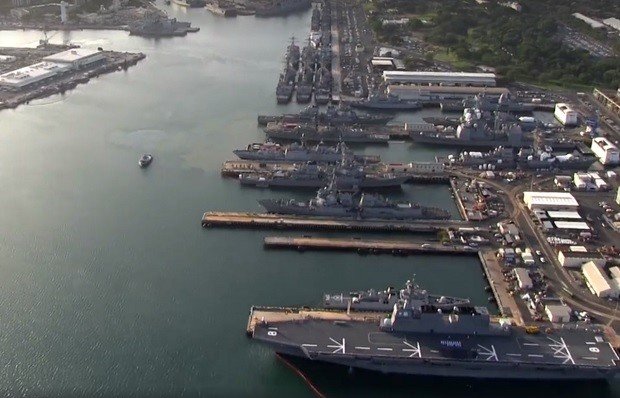
If this sudden attack were successful, regional countries would see that US power in the region had been negated, with the closest US bases to the Chinese mainland in Hawaii, on the US west coast, Diego Garcia in the Indian Ocean or as far south as Australia. The sudden attack option could be seen as an alternative to the incremental model or as a logical development from a weak US and allied response to a no-fly, no-sail challenge by China against Taiwan. Looking at what all this would mean for Australia, it would be prudent for the government to focus on the worst case, whether considered the likeliest or not. In my view, from a military point of view, the sudden, decisive attack is the most likely and logical.
Prepare to Go it Alone.
But what does this mean for Australia? It is likely that Australia will never deter a war between China and the US. We are not a big enough player. Australia might deter a direct attack on Australia by China from within such a US-China war by being able to reduce our vulnerability to such an attack. For example, as a priority, Australia might invest in ballistic missile defence, the ability to manage a sea mine attack on our ports, or resilience to economic attack through the production of liquid fuel domestically and a reserve of fuels, ammunition, missiles and spare parts for the military and our energy sector. But what Australia must now prepare for is the distinct possibility that the US might be forced out of our region for a very long time and China could run rampant. Is our nation’s resilience and self-reliance enough for this, or our defence force lethal enough, able to fight for long enough, and big enough to defend against Chinese coercion or subsequent aggression while the US recovers? And what is our strategy to make the nation and the defence force resilient and powerful?
Finally, how much time do we have? The first step is to recognise the appalling threat.

Catastrophic bushfires ‘caused an explosion in ocean life’.
Smoke from the 2019-20 bushfires in Australia caused an explosion of life in the Southern Ocean that was equivalent to turning the entire Sahara desert green. Research published on Thursday 09 Sept 2021, in Nature journal has found that total carbon dioxide emissions from the bushfires was 715 million tonnes, twice as much as previously thought. Another paper, also published in Nature, says an equivalent amount of CO2 was sucked up by a phytoplankton bloom in the ocean between New Zealand and South America caused by fertilisation of the ocean by smoke from the fires.
The bushfires caused catastrophic damage on land, killing billions of creatures, but Pete Strutton from the Institute for Marine and Antarctic Studies at the University of Tasmania, a contributing author on the second paper, said the phytoplankton bloom had positive impacts at sea. Part of the bloom would have sunk to the ocean floor, locking the CO2 out of the atmosphere. In addition, as a critical building block in the aquatic food chain, the phytoplankton would have been eaten by other species, storing the carbon and dramatically increasing ocean productivity.
Professor Strutton said the bloom was not the same as a “toxic” algal bloom that starved the ocean of oxygen and was detrimental to life. “It is not like the kind of thing that causes deoxygenation when it decomposes”, he said. The unknown is exactly how much of the additional CO2 from the bushfires was captured and lock away.
The researchers, led by Weiyi Tang from Duke University, said more research was needed to properly understand the implications of there potentially being more wildfires as a consequence of climate change. Professor Strutton said the team had studied 22 years of satellite data to assess the impact of the 2019-20 fires. “Nothing like the increase in productivity we saw has been observed in that 22 years in that part of the ocean”, he said.
Using satellites and autonomous profiling floats, researchers “observed a greening in the south Pacific sector of the Southern Ocean that exceeded the size of Australia.” The research paper said feedbacks between climate and wildfires were complex and often poorly represented in climate models, leading to high uncertainty in future projections. “There is increasing evidence that wildfires may have had an important role modulating atmospheric CO2 during glacial – interglacial periods”, the paper said. “Given the increasing risk of wildfires with climate change (for example, in southeast Australia, the Amazon, and the western US), their central role in our global climate in the geological past, at present, and in future therefore argues for a more comprehensive representation of wildfires in climate models”, it said.
“Among other things, extensive measurements of wildfire aerosols and targeted studies of their effects on marine ecosystems are needed to further elucidate the wide-ranging impacts, especially for an event of the magnitude of the 2019-20 Australian wildfires”, the paper concluded.
More evidence that we simply do not know/understand how complex climate is and how skewed the modelling must be until all factors are known and built in.
What exactly is your ‘Fair Share’ of what someone else has worked for?
Covid Vaccine a farce?
Brendan Godwin.
Firstly there is no vaccine. By the mere approval for emergency use means these drugs are an experiment. And a very dangerous one at that. They are experimental gene therapy. They hope they will work as a vaccine but so far there is zero clinical evidence of that. The correlative evidence shows they are not working.
We don’t know what’s in them. They are not obligated to tell the regulatory authorities and they are not. The RNA/DNA drugs are coded with instructions to do something and we do not know what those instructions are. We are slowly finding out from medical scientists doing their own tests and we can see some things and what we can see is not good. One medical scientist has found the human body is generating an immune reaction to something that is not on the ingredients list. They are hiding ingredients.
Dr. Robert Malone is the inventor of RNA Vaccine technology and says the Spike protein, that the body generates from the RNA/DNA coding, is very dangerous, it's cytotoxic. So far this year the jab is killing way more Australians than the virus. From the TGA adverse reports, that death count is around 350 at the present time, 60,000 in the US. Deaths in the UK - 61% had received one dose and 44% were people who had received both doses. 60% of people being admitted to hospital with Covid-19 in England have been fully vaccinated. 52% of deaths in Israel are fully jabbed. The population of Israel is about 84% vaccinated. But the new cases of COVID in Israel are about 84% with vaccinated individuals.
Clinical evidence of efficacy is testing a person that has been all jabbed up and that person develops an immune reaction when exposed to the virus. That is a test that has never been conducted. The drug companies only had to show reduced symptoms to get approval. These 95% efficacy rates were produced from models, many written by the same people that write climate models. Totally falsified by the data out of Israel and the UK.
We don’t need a vaccine passport for experimental drugs that are killing a lot of people and appear to be failing experiment.
You only need two tools in life, WD-40 and duct tape.
If it doesn’t move and should, use WD-40. If it moves and shouldn’t, use duct tape.
Did 45K people die within 3 days of getting Covid vaccine?
While attending a rally in Southern California in July 2021, US attorney Thomas Renz claimed that an anonymous government whistle-blower had proof that an estimated 45,000 people had died within three days of receiving their COVID-19 vaccine. Renz was speaking at a Clay Clark’s ReAwaken America Tour in Anaheim, California, on July 18. The video and its purported claims were shared by a number of far-right conspiracy websites, including Info Wars and Fear Unmasked. Though the claims were unfounded, many posters of the video argued that the allegations made during Renz’s speech provided evidence that the federal government was lying about the safety and efficacy of the COVID-19 vaccine.
“I’m filing papers in federal court today, so you guys are the first to hear. Go ahead and post it, it will be censored in about six seconds,” Renz told the audience.
According to Snopes – It’s all crap!
I’m the type of husband that helps his wife look for the missing chocolate that I ate.
Why you shouldn’t compare Covid vaccines.
"In the US, the first two available Covid-19 vaccines were the ones from Pfizer/BioNTech and Moderna. Both vaccines have very high "efficacy rates," of around 95%. But the third vaccine introduced in the US, from Johnson & Johnson, has a considerably lower efficacy rate: just 66%.
Look at those numbers next to each other, and it's natural to conclude that one of them is considerably worse. Why settle for 66% when you can have 95%? But that isn't the right way to understand a vaccine's efficacy rate, or even to understand what a vaccine does. And public health experts say that if you really want to know which vaccine is the best one, efficacy isn't actually the most important number at all.
See HERE.
Shops: No shoes, no shirt, no service. People: OK, no problem.
Traffic laws: Wear a seatbelt in your car or get booked. People: OK, no problem.
WHS: While working in certain places you must wear safety gear. People: OK, no problem.
Airlines: You must be seated and wear your seatbelt with your tray table up when landing. People: OK, no problem.
Airport security: Before getting onto the aircraft you may need to remove your shoes, your belt, anything from your pockets and go through this X-ray machine. People: OK, no problem.
Supermarkets: Please wear a mask while you are shopping to help reduce the risk of infecting others with a potentially deadly virus. People: How dare you take away my personal liberties and rights.
Corvid-19 Virus inoculation debate.
Opinion.
Detractors do not do their own research, all they are do is find someone to corroborate what they already believe then regurgitate it.
Unless you’re a scientist, running a peer reviewed study, you only know what you’ve been told by someone else. Detractors don’t have better data than the Therapeutic Goods Administration (TGA). They have Google and a flimsy grasp of science or logic. Give me a break with this “I did my own research” bullshit. Reading someone else's rubbish is not research. We have experts in different fields who spend hours testing and retesting then retesting again to guide us, to keep us safe. These detractors don’t know how the human body works at cellular level, most don't even know how an aeroplane flies, or a radio works or what makes the internet work, yet people will listen to them. WHY?
Give us a break. Tb
Russia V’s the US
The following video is an example of the different recruiting methods employed by both the Russian and US armed forces.
Perhaps it says it all!
Back Go to page: 1 2 3 4 5 6 7 8 9 10 11 12 13 14 15 16 17 18 19 20 Forward